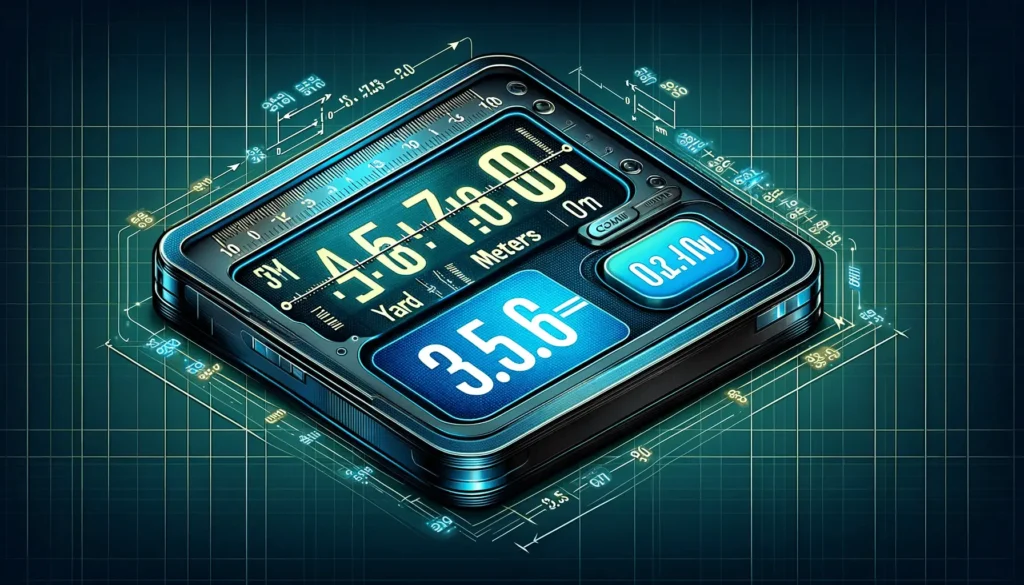Yards to Meters
Yard
Definition: The yard is a unit of length in the Imperial system and the United States customary system of measurement. It is equivalent to 3 feet or 36 inches. The yard is primarily used for measuring lengths and distances in countries that have not adopted the metric system.
History/Origin: The yard has a long history dating back to ancient times. It was originally defined as the distance from the tip of a person’s nose to the end of their outstretched arm. In medieval England, the yard was standardized as the distance between the King’s nose and the end of his thumb when his arm was fully extended. Over time, various official yardsticks were established, leading to the adoption of the international yard in 1959, defined as exactly 0.9144 meters.
Current Use: The yard is still commonly used in the United States, the United Kingdom, and a few other countries that have not fully adopted the metric system. It is often used for measuring shorter distances in everyday life, as well as in sports (e.g., football fields are measured in yards) and some industrial applications. However, in most scientific and international contexts, the meter is the standard unit of length.
Meter
Definition: The meter is the base unit of length in the International System of Units (SI), which is the modern form of the metric system. It is defined as the distance that light travels in a vacuum in exactly 1/299,792,458 seconds. The meter is used worldwide for measuring lengths and distances and is the standard unit of length in science, industry, and everyday life for most countries.
History/Origin: The meter has a well-documented history that dates back to the late 18th century. It was originally defined as one ten-millionth of the distance from the North Pole to the Equator along a meridian through Paris. This definition was later refined and ultimately redefined in terms of the speed of light in 1983, providing a highly accurate and universal standard.
Current Use: The meter is the primary unit of length in most countries around the world. It is used in scientific research, engineering, construction, navigation, and virtually all aspects of daily life. The meter is a fundamental unit of measurement in the metric system, which is preferred for its simplicity and ease of conversion in calculations. It is also widely used in international trade and global scientific collaboration, making it a universally accepted standard for measuring length.

How to Convert Yard to Meters
To convert yard to meters, you can use the following formula:
1 yard = 0.9144 meters
So, to convert a length in yards to meters, simply multiply the number of yards by the conversion factor (0.9144):
Length in meters = Length in yards × 0.9144
For example, if you have a length of 5 yards that you want to convert to meters:
Length in meters = 5 yards × 0.9144 = 4.572 meters
So, 5 yards is equal to 4.572 meters.
Yard to Meters Conversion Table
| Yards | Meters |
|---|---|
| 1 | 0.9144 |
| 2 | 1.8288 |
| 3 | 2.7432 |
| 4 | 3.6576 |
| 5 | 4.572 |
| 6 | 5.4864 |
| 7 | 6.4008 |
| 8 | 7.3152 |
| 9 | 8.2296 |
| 10 | 9.144 |
| 11 | 10.0584 |
| 12 | 10.9728 |
| 13 | 11.8872 |
| 14 | 12.8016 |
| 15 | 13.716 |
| 16 | 14.6304 |
| 17 | 15.5448 |
| 18 | 16.4592 |
| 19 | 17.3736 |
| 20 | 18.288 |
| 21 | 19.2024 |
| 22 | 20.1168 |
| 23 | 21.0312 |
| 24 | 21.9456 |
| 25 | 22.86 |
| 26 | 23.7744 |
| 27 | 24.6888 |
| 28 | 25.6032 |
| 29 | 26.5176 |
| 30 | 27.432 |
| 31 | 28.3464 |
| 32 | 29.2608 |
| 33 | 30.1752 |
| 34 | 31.0896 |
| 35 | 32.004 |
| 36 | 32.9184 |
| 37 | 33.8328 |
| 38 | 34.7472 |
| 39 | 35.6616 |
| 40 | 36.576 |
| 41 | 37.4904 |
| 42 | 38.4048 |
| 43 | 39.3192 |
| 44 | 40.2336 |
| 45 | 41.148 |
| 46 | 42.0624 |
| 47 | 42.9768 |
| 48 | 43.8912 |
| 49 | 44.8056 |
| 50 | 45.72 |
